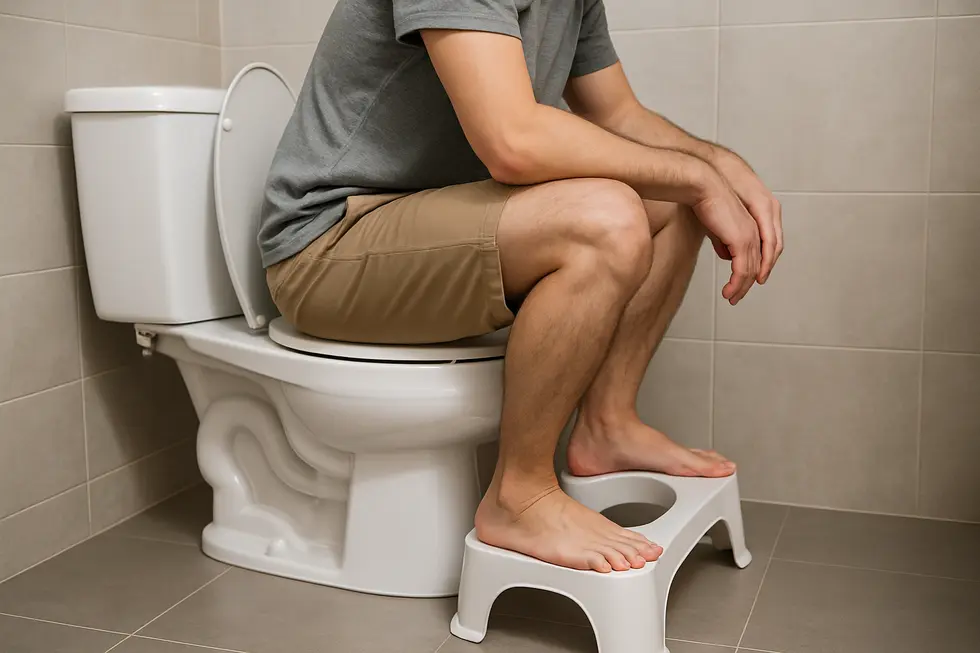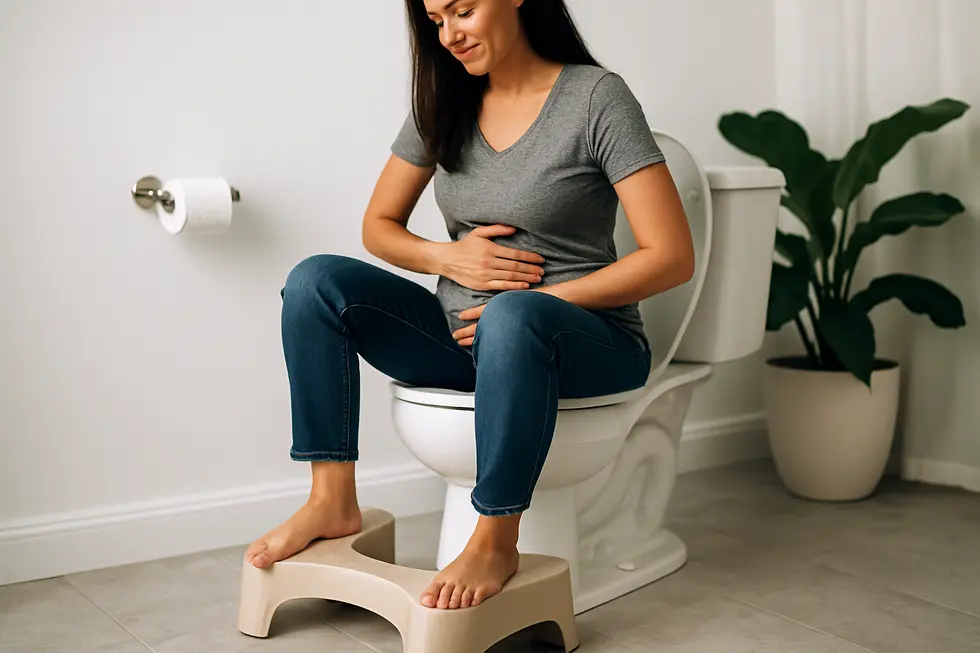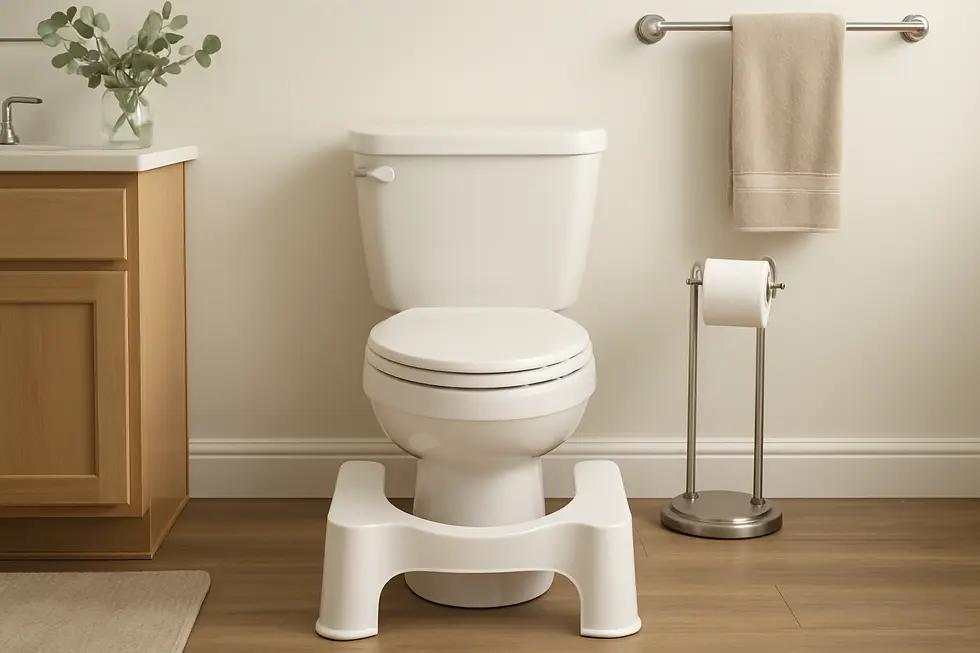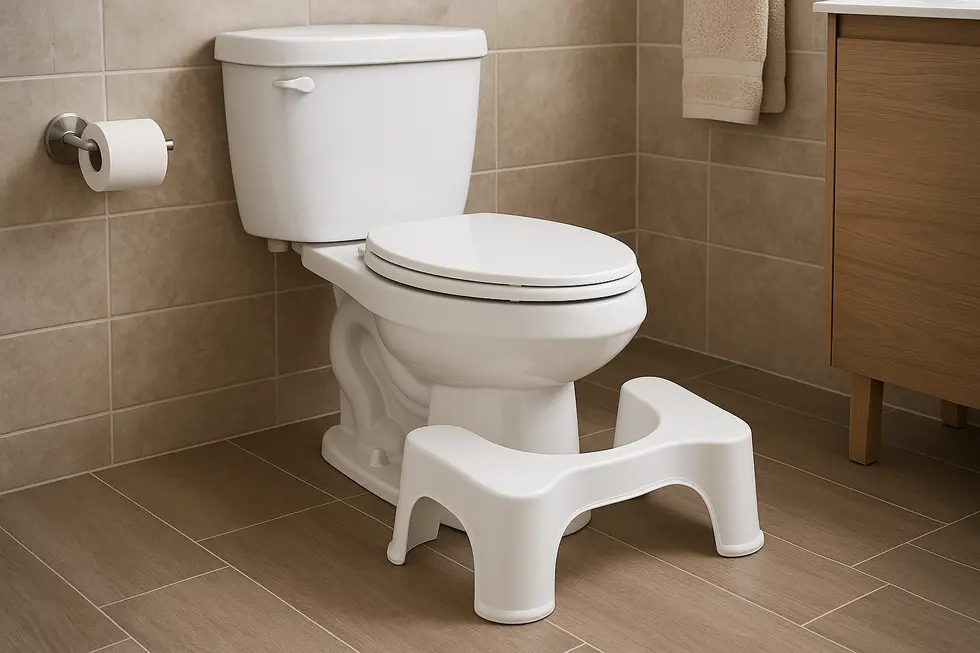Toilet Stools
Optimizing Family Wellness: Best Position for Toilet Stool Use
In the realm of family health and well-being, achieving comfortable and effective digestion is pivotal. An often-overlooked aspect of this process is the position we adopt during bowel movements, which can influence our overall digestive health. This article delves into the advantages of utilizing a toilet stool and adopting the best position for it to promote easier and healthier bowel movements. The following chapters will explore the scientific underpinnings of this posture, the health benefits it can bring, and practical tips for integrating it into your daily routine.
Aligning Joints and Gut: The Biomechanics Behind the Ideal Toilet-Stool Posture

Why angle matters When you lift your feet onto a toilet stool, the knees rise above the hips and the pelvis tilts forward. That subtle tilt is powerful: it straightens the kink created by the puborectalis muscle sling and enlarges the anorectal angle from roughly 80° in a conventional 90-degree seat to about 105°. With the rectal pathway now almost linear, abdominal pressure can nudge waste downward instead of you bearing down hard. In cadaver and MRI studies, this simple change has been shown to reduce intrarectal pressure by up to 40 percent, translating to less straining and fewer micro-tears in delicate anal tissue.
Muscles, gravity, and momentum working together Relaxation rather than force becomes the dominant driver of evacuation. Because the pelvic floor is no longer actively contracting to maintain continence, the descending colon can empty in one smooth wave. Gravity assists as the torso-thigh angle closes to about 35°, putting body weight slightly forward. Heels planted on the stool ground the legs so core muscles stay passive and the diaphragm can drop freely with each breath, adding gentle hydraulic push. Over time this harmony of biomechanics helps prevent hemorrhoids, fissures, and even prolapse that chronic straining may trigger.
Fine-tuning your form Not every body bends the same. Start with a stool height that lets your thighs approach the chest without hip pinching—between 6-9 inches works for most adults. Rest elbows on knees and let the lower back round naturally; forcing an upright spine re-tightens the sling. If you feel hamstring or ankle tension, slide the stool a little farther from the base of the toilet until the stretch eases. Small adjustments keep circulation flowing while preserving the optimal anorectal opening.
Mastering these nuances not only streamlines a morning routine, it supports lifelong bowel health. For a deeper look at the extended benefits of toilet stool posture, see this guide. Clinical outcomes, including the Ohio State trial where 90 percent of participants reported less strain after four weeks, are discussed in detail (https://pubmed.ncbi.nlm.nih.gov/30825775).
From Strain to Flow: Health Payoffs of the 35-Degree Toilet Stool Posture

Picture the moment you raise your feet onto a sturdy stool and feel your knees lift above your hips. In that simple motion, you tilt your torso-to-thigh angle toward roughly 35 degrees—a biomechanical sweet spot that straightens the final section of the colon. When the rectum lines up with the anal canal, waste no longer needs to navigate a kinked pathway, so gravity and a gentle abdominal push are enough. The immediate effect is obvious: stools exit more quickly and with far less effort.
When straining diminishes, downstream benefits accumulate. Lower intra-abdominal pressure means the veins around the anus are spared repetitive bulging, significantly cutting the risk of painful hemorrhoids. Pelvic-floor muscles also avoid the chronic tension that can develop when we bear down in a 90-degree seat, protecting long-term continence and sexual health. Over weeks, users often report that stubborn constipation eases, gas clears sooner, and that “still-full” sensation after a visit vanishes. These improvements aren’t merely anecdotal; researchers observed 90 percent of volunteers straining less and 71 percent finishing faster after four weeks of stool use.
Better emptying also supports overall colon health. Residual fecal matter harbors toxins and fosters bacterial fermentation, both factors linked to inflammation and, some experts argue, heightened cancer risk. By allowing a more complete evacuation each time, the elevated-knee posture reduces stagnation, keeping the large intestine cleaner and calmer. People prone to bloating or IBS often find that this tiny ergonomic tweak complements fiber and hydration strategies more effectively than laxatives alone.
Comfort, of course, matters. If hip tightness arises, experiment with different stool heights until your thighs rest without strain; an adjustable model can help. You might lean forward slightly, resting elbows on knees to relax the pelvic floor further. For a deeper dive into practical adjustments, see this concise posture benefits guide.
Modern bathrooms may never mimic a forest squat, yet a humble footstool bridges the gap remarkably well—promoting smoother elimination, protecting vascular tissue, and nurturing long-term digestive resilience (source: TBS News).
From Theory to Throne: Ergonomic Fine-Tuning for the Perfect Toilet-Stool Posture

Adopting the 35-degree squat-inspired angle is less about owning a stool and more about orchestrating a constellation of small ergonomic details. Place the stool close enough that both feet rest fully, heels down, toes pointing forward; dangling toes tense calf muscles and nudge the pelvis backward, undoing the very alignment you’re after. Ideally, the top of the stool raises your knees five to seven inches above the seat plane. Taller users might prefer an eight-inch platform, while children and petite adults often feel steadier on a four-inch riser. A quick check: if you can breathe into your belly without rounding your lower back, you’ve likely hit the sweet spot.
Lean forward slightly, letting your elbows rest on your thighs. This micro-hinge at the hips lengthens the spine and encourages the puborectalis muscle to slacken, widening the anorectal angle just enough for gravity to finish the job. Still straining? Wiggle your knees apart a few centimeters; spreading the thighs externally rotates the hips and can create an additional two to three degrees of openness.
Material matters, too. A stool with a non-slip surface prevents cold feet—literally—and stabilizes the ankles so the pelvic floor can relax. Wooden models feel warmer but weigh more; lightweight plastic versions are easier to tuck away. Whichever you choose, inspect its load rating and rubber grips every few months, especially in humid bathrooms where warping or mold can appear.
Special populations deserve extra tweaks. Pregnant individuals often experience lumbar sensitivity; placing a rolled towel behind the lower back cushions the sacrum while maintaining the necessary knee elevation. Seniors or anyone with limited balance may benefit from a stool that flares outward, creating a broader, tip-resistant footprint. Before investing, skim an optimal stool height guide to match dimensions with your toilet’s rim.
Finally, remember that posture complements but never replaces hydration and fiber. Combine the right angle with a daily two-liter water target and 25–30 grams of soluble fiber, and you should notice smoother, shorter bathroom visits within weeks. For deeper anatomical visuals, see the imaging study published by Ohio State researchers (https://pubmed.ncbi.nlm.nih.gov/30832614/).
Final thoughts
Utilizing a toilet stool to elevate your knees above hip level is a simple yet effective strategy to enhance digestive health and comfort for the whole family. By understanding the biomechanics, appreciating the health outcomes, and implementing ergonomic solutions, families can adopt this practice to support better bowel health. This adjustment not only alleviates constipation but also fosters healthier bathroom habits.
Experience a new standard of clean with PEGABidet—designed for comfort, safety, and independence. Join thousands who trust us to make personal care simple and dignified. Contact us at contact@pegabidet.com
About us
PEGABidet is a brand owned by L.A NEXTGEN LLC, based in California. We design intuitive, hygienic, and accessible bathroom solutions that prioritize safety, dignity, and independence. Our mission is to make personal care effortless and empowering for people at every stage of life.

